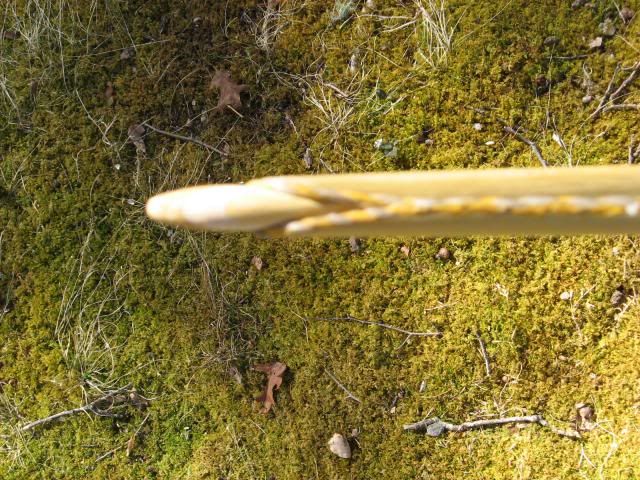I'd leave the handle area full thickness to be sure it remains stiff through the draw. The least bit of bending in the handle area will cause the handle riser to pop off.
I make bows symmetrical with the center of the handle the center of the bow. When I lay out a bow I mark the center, lengthwise, then measure 2" above and below the center line for the handle and 1 1/2" to 2" each side of that for the fades. 1 3/8" to 1 1/2" wide at the fades, out 8" then a straight taper to the tips. I'd leave the tips 5/8" wide until after first brace so you can see how the string tracks. You can reduce the tips to 3/8" after you know everything lines up. I don't shape the handle until later either in case you have to move the handle to one side or the other.
Now draw out the side profile on each side of each limb and begin reducing. The limb thickness that macbow suggested should work fine. With those thicknesses the limbs should bend nicely when you glue it up.
Basically Perry reflex is adding reflex at glue up time by clamping the handle to the work table, back up, and the tips lifted up on 4" blocks. I use end cuts of 2x4.
You can reduce the hickory backing strip to 1/8" or less on a belt sander.
Here is a handle I did a few years ago on a hickory backed lemonwood bow. See how I left the lemonwood full thickness at the handle and faded into the limbs...
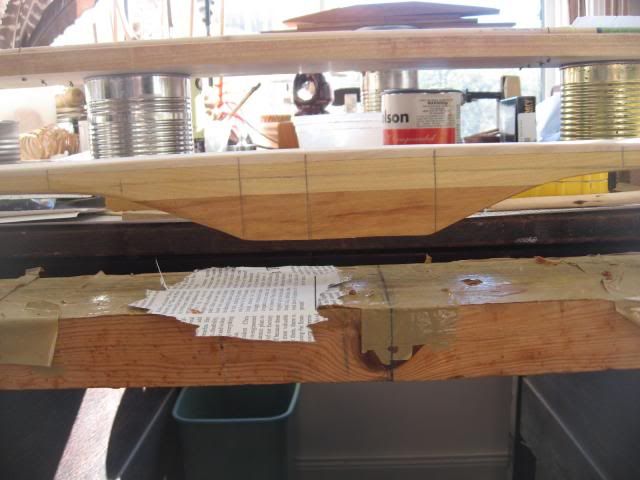
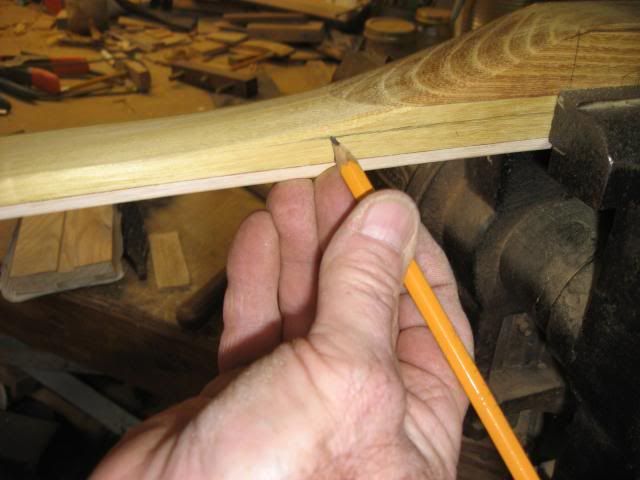
Here I left the tips wide to begin with...
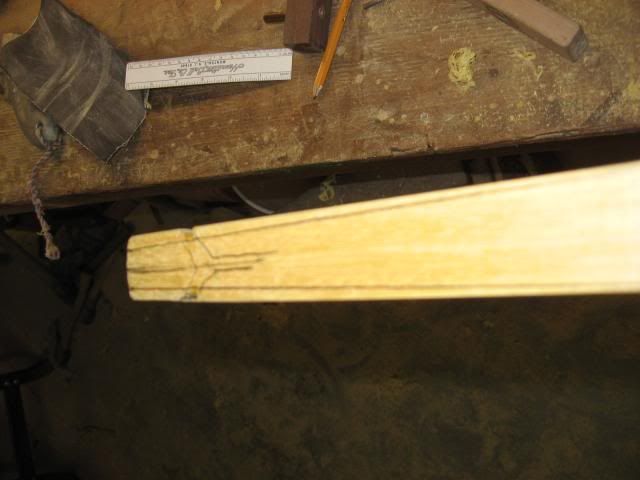
Then reduced the tip width, added the tip overlays...
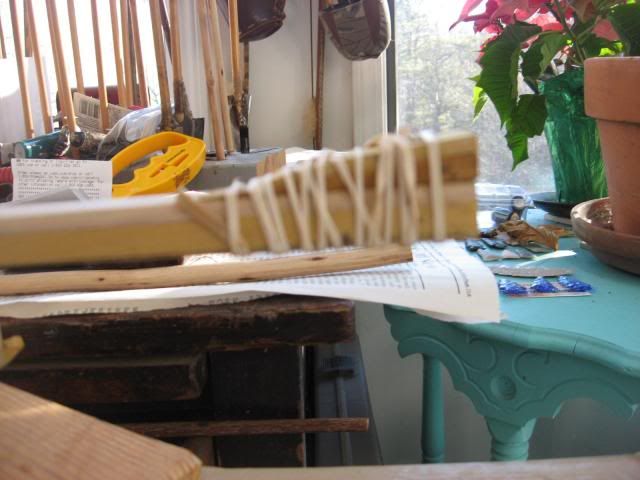
...and the final shaping of the tips...
